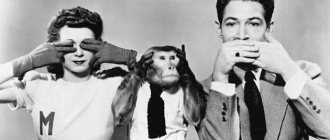Biography of Socrates
Socrates was born into an ordinary family in the 5th century BC. His father worked as a sculptor, and his mother as a midwife. The future philosopher studied independently. He learned his skills as a sculptor from his father. He gathered young people who were eager to gain new knowledge. He held conversations on walks and squares, influencing his surroundings. Speaking as a teacher, he did not take money for conversations, considering trading in wisdom unacceptable. His biography was written by listeners, students and friends, since he himself did not write anything down. The philosophy is expounded in the works of Xenaphon and Plato. But Plato inserted his own reasoning into the notes, presenting it in the form of discussions between Socrates and the participants in the conversation.
The personality of Socrates is attractive to his contemporaries. They formed other philosophical schools. Each continued his teaching. He was seen as the founder of a new philosophy. He was a teacher, an example of a clear mind and inner peace. His external mediocrity refuted the deep-rooted ideas of the Greeks that a beautiful soul can only be found in a beautiful body. The sage's nose was flattened, his nostrils wide and upturned.
He talked with people from different social classes, and for each he tried to pose the question in such a way that the interlocutor could correctly understand the meaning of what was said. The questions forced the interlocutor to think. Conversations with those who wanted him led him to prison. He was charged with anti-state activities and serving a demon. The demon was the name given to the inner voice that prompted the philosopher to reason and think. He refused to escape from prison, despite the escape plan organized by his students and associates. In the spring of 399 BC. the philosopher drank from a cup that contained poison that paralyzed breathing. Until the last day he was calm and continued philosophical conversations and reasoning with himself.
Ethics and opinions on the role of the state
Today the ancient Greek philosopher would be considered an idealist. Socrates was sincerely convinced that the totality of knowledge acquired by a person a priori makes him virtuous. According to the philosopher, this is a rational approach, and therefore everyone who understands the concepts of good and evil will adhere to ethical principles when choosing decisions. In other words, if a person has accumulated a lot of knowledge and understands what good is, then he will not do evil, since it is unreasonable. Perhaps this was the case in ancient times...
Socrates' views on politics were a continuation of his ethical principles. He believed that the state should be governed by its best citizens, who are characterized by a high level of morality and justice. In addition, only those who had accumulated relevant experience could become rulers. Reality clearly diverged from theory, and therefore Socrates spoke sharply about the distortions of democracy of that time.
We can say that his picture of the world did not coincide with reality, but the philosopher did not give up trying to find the truth. And the Socratic method of conversation was designed to push the dull to the shining heights of justice and goodness.
Socratic method
The main idea of the Socratic method is to seek truth through conversation, or argument. From it came the idealistic dialectic. Dialectics is the art of finding truth through revealing contradictions in the interlocutor’s reasoning and overcoming them. The method is based on two parts:
- Irony.
- Majeutics.
The Socratic method is based on systematic questions asked of the interlocutor, the purpose of which was to lead him to understand his own ignorance. It's irony. But the ironic presentation of contradictions is not the essence of the method. The main thing in it is to find the truth through revealing contradictions. Maieutics continues and complements the Socratic method.
The thinker himself said that his method, like a midwife, helps to give birth to the truth. Thought is divided into links. From each question a question is formed, to which there is a short or clear answer. To put it simply, this is a dialogue with the seizure of initiative.
Let us list the advantages of the Socratic method:
- The interlocutor's attention is focused and does not wander.
- The illogicality in the chain of reasoning is quickly noticed.
- Disputants find the truth.
- In the chain of reasoning, other issues that are not related to the original topic are resolved.
Techniques of Socratic dialogue
Socrates' leading method of teaching is dialogue, which is not a debate, but everyone who participates in it receives knowledge and truth as a result.
Analyzing this method, modern scientists have come to the conclusion that Socrates can be called the first psychoanalyst who does not seek to explain or “impose” something on his client, but carefully pushes him to independently establish and say things that are important to him. In the process of Socratic dialogue, a person himself pronounces things that he did not previously know, but came to them through reasoning and conclusions.
In his dialogues, Socrates used the following two techniques:
- Irony is used to tactfully point out a person’s ignorance. With leading questions, Socrates leads a person to the fact that he comes to absurd conclusions through his own false reasoning and premises. That is, a person drives himself into a “trap” and accordingly understands and realizes his own mistakes.
- The “appearance” technique is aimed at stimulating a person’s interest in his thinking.
Note 3
This technique is based on the aphorism:
"Know yourself"
This aphorism is written on the walls of the ancient Greek temple of Apollo in Delphi, where Socrates lived and philosophized.
When developing his methods, Socrates sought only one thing - to help people solve theoretical questions and problems with the power of their own minds. By the own powers of reason, Socrates understood the ability to use induction, to reason from the particular to the general. If problems arose in reasoning, their solution had to be found through a series of clarifying questions.
Socrates' teaching about goodness
Let's consider how Socrates understood good. Improving educational conditions is the sacred duty of people. The most important thing is education, both personal and other people. The highest human wisdom is the ability to distinguish good from evil. Every person should be guided by justice in his actions. A doctor will not give useful advice to someone who monitors their health. Knowledge is the only good, and ignorance is the only evil. Anyone who follows his own pleasures will not be able to keep his body and soul pure. Whoever wants to move the world must first move himself.
Women's love is worse than men's hatred. This is poison, dangerously sweet. Wisdom rules the world and heaven. Drunkenness reveals vice, but happiness does not change character. The ability to enjoy little things is a sign of a rich nature. Evil arises when a person has not known good.
To form character qualities
First, you need to understand the basic concept of “empathy.” By the word empathy, my colleagues and I understood “co-thinking”, “compassion”, “co-experience”, “co-suffering”. Depending on the situation, one of these words became the main one.
Task questions could be (roughly) the following: “How does love (friendship, help, cooperation, responsibility, etc.) follow from empathy? How will empathy manifest itself in a difficult situation (suggested by the teacher)? How does empathy affect creativity? The result of such a dialogue is to demonstrate personal empathy in a specific action.”
Socrates' Doctrine of God
Theology became the completion of the philosophy of the sage. He claims that people are not capable of understanding the truth; only God knows everything. The Athenian philosopher had no fear of death, because he did not know whether it was good, evil, or the highest good, and said that a person in the face of death can prophesy. The sign does not leave him on the way to court and leaving the courtroom, everything happens as it should. Otherwise, he would have been stopped by a sign. The Gods protect a good person during life and after death, taking care of his affairs. Socrates said about God: “I know he exists and I know what he is.” Matter in his definition is the expression of divine thoughts. He rejected the study of nature, considering it to be interference in the affairs of the gods.
People combine two opposites – the soul and the body of which they are composed. The soul strives to cognize knowledge and virtue, the body strives for comfort and base desires. Differing goals implies a conflict between soul and body. You need to take care of the soul and ignore bodily needs. The ideal is higher than the good, even at the risk of life and health.
The moral character of the mind places it above the body. The mind has a supra-personal universal part. This part is the Universal Mind, or God.
The philosopher placed one God above the recognized Greek ones. The Divine manifests itself in the soul of man, and the truth is hidden within him. God is not a person, but a world order endowed with reason. A person's wisdom costs nothing.
To develop skills
When a student, for example, has understood the initial rules of any mechanical operations or methods of solving mathematical problems (physics, chemistry), one can proceed to the Socratic method. This means that more complex tasks for independent execution are given sequentially as they are completed. The number of increasingly difficult tasks should be sufficient and determined by the student’s success. In the process of the student’s independent work, the teacher relevantly and ethically poses (approximately) the following questions: “Why was this method, path chosen? Is it possible to use another way? Why is this way effective? What thoughts arise when performing?”
Ethics
What are the ethics of Socrates? The ethical meaning in his philosophy is virtue, knowledge of goodness and actions in accordance with this knowledge. A brave person knows the right action and takes it. A fair person is one who knows what to do in public affairs and does so. A pious person knows and observes religious rituals. Socrates spoke about the inseparability of virtue and knowledge. By acting immorally, people are mistaken and suffer from a lack of understanding of good and evil.
Virtue is achieved only by noble people. Among the virtues, the philosopher identified:
- Restraint is the ability to cope with passion.
- Courage is the ability to overcome danger.
- Justice is observance of the law of people and God.
The philosopher considered virtues to be unchangeable and eternal.
Consider the philosophical ethics of Socrates:
Cognition of space is impossible; man will not find a way out of contradictions. He is able to know what belongs to him - his own soul. This is where the philosopher’s demand “Know thyself” came from. The purpose of knowledge is to guide a person in life. The value of knowledge of phenomena is the ability to live wisely.
Example of a 3-step dialogue
Imagine a dialogue regarding purchasing a car. Let's say that your interlocutor considers expensive cars to be of better quality. Inexpensive options for him are a source of additional hassle. How to build a conversation?
- Agreement. Tell me that cars really can be both cheap and expensive. The same goes for quality. Agree with this statement.
- Doubt. Here we can mention the fact that not all expensive cars are suitable for our roads and climatic conditions. And it’s not always possible to buy spare parts for them without problems. In some cases, you have to place an order abroad.
- Argumentation. At this stage, it would be appropriate to note that for cheaper and simpler cars it is easier to find the necessary parts. They can be bought at any car dealership. You don’t have to search headlong for them in other cities or countries, and then wait months for delivery.
The Socratic method of dialogue is applicable in any field. He will help you emerge victorious from any, even the most uncomfortable or delicate situation.
Form and content of the method
The Socratic method is a combination of irony and maieutics with induction and formulation.
The technique of maieutics was first mentioned by Plato in his dialogue Theaetetus. This concept was created by Socrates and means a way of identifying hidden personality traits through leading questions. Their system and focus is subordinated to a single goal: the enemy’s awareness of his internal contradictions and lack of competence. Socrates called his technique “midwifery,” offering his opponent a new birth, thereby helping him move to the next stage of knowledge. This was the Socratic method of teaching.
As for the form of dialogue, the philosopher emphasized irony and self-irony, as if luring the interlocutor into the “wild of philosophical constructions” and allowing him to get carried away by explaining obvious truths. As a rule, the opponent did not feel very confident in such an exchange of opinions, which contributed to the weakening of his logical defense. As a result, many contradictions were discovered in the argumentation system, which Socrates took advantage of.
Coursework in pedagogy on the topic “Socrates’ method in pedagogy”
Table of contents
This work is devoted to the Socratic method in pedagogy. The study of this topic is especially relevant, since the influence of Socrates on the development of pedagogy is truly enormous. In particular, Socrates proposed a unique method of conducting a conversation and discussion, which allows one to find scientific truth. Now this method has not lost its significance.
The main goal of the work is to consider the features of the Socratic method in pedagogy.
In connection with this goal, it is necessary to complete the following tasks:
- Describe the essence of Socrates' method of cognition.
- Identify the specifics of Socratic conversation.
- Consider the application of the Socratic method in pedagogy.
- Draw conclusions from the study.
The following methods were used during the work:
— analytical;
— synthesis method;
- method of systematization.
Structure of the work: introduction, two chapters, conclusion and list of references.
Many pre-Socratics sought to acquire knowledge that, being mediated by the subjectivity of the individual, would not be reduced to this subjectivity. The Sophists, in particular, insisted that any truth is relative, and accordingly, they searched for a new form of reliable knowledge. These forms of knowledge, according to the sophists, must withstand the closest critical examination.
The philosopher from Athens Socrates (c. 470 - 399 BC) also engaged in similar searches, who at the first stage of his philosophical activity belonged to the Sophists, and at later stages consistently criticized their activities.
Socrates chooses for himself the problem of man and human consciousness, his essence, as the main philosophical question. Socrates believed that a person, first of all, should know himself.
As Socrates believed, human consciousness is a multi-level formation; it contains various layers that enter into very complex relationships with the individual, the bearer of consciousness, and in some cases, this leads to insoluble conflicts. According to Socrates' position, the philosopher must strive to discover not only the subjective, but also the objective content of consciousness, to prove that the objective content of consciousness has an advantage over the subjective, and, accordingly, it acts as a judge.
Socrates characterizes this highest authority as reason. Reason is capable of being a source not only of individual opinion, but also of universal, universally binding knowledge. But this knowledge is acquired by a person only through his own efforts; this knowledge cannot be obtained from the outside as some kind of ready-made element.
Connected with this thesis is Socrates’ desire to search for truth through common efforts, through conversations (dialogues), when the interlocutors, critically analyzing those opinions that are considered generally accepted, discard them one by one until they derive the knowledge that will be recognized by everyone as true1 .
Many researchers note that Socrates had a special art - his famous irony, which allowed him to create doubt in his interlocutors that their traditional ideas were true, trying to lead to the knowledge of the reliability of which they themselves would be convinced. “Socrates considered the goal of the critical work of the mind to be the acquisition of a concept based on a strict definition of the subject. So, he tried to determine what justice is, what goodness is, what the best state structure is, etc.”2.
Of course, Socrates paid so much attention to the concepts of justice, good and evil for the reason that, like the Sophists, he sought to study the basic issues of human existence, to clarify the problem of the purpose of human life, Socrates was especially concerned about the problem of social structure.
In philosophy, Socrates saw a means of knowing the essence of good and evil. The search for knowledge about the good and the just “together, in dialogue with one or more interlocutors, in itself created a kind of special ethical relationship between people who gathered together not for the sake of entertainment and not for the sake of practical matters, but for the sake of finding the truth”3.
However, philosophy - the love of wisdom - can be considered as a moral activity only in those cases when knowledge itself is already good. It is on such ethical rationalism that the philosophical teaching of Socrates is based.
The philosopher always considered immoral and immoral actions as a consequence of ignorance of the truth. If a person knows what is good, he will never be able to act in a bad way - Socrates was deeply convinced of this. Thus, as we see, in the concept of Socrates there is an identification of a bad act with delusions, a mistake, and, according to Socrates, a person cannot make these mistakes of his own free will.
Accordingly, if the source of moral evil is ignorance, then knowledge is the source of moral perfection. That is why philosophy, as a path to knowledge, appears in Socrates as a means of educating a virtuous person and, accordingly, a just society and state. Knowing the good is, according to Socrates, already means following the good, and the latter allows a person to find happiness4.
However, the fate of Socrates himself, who throughout his life strove to become virtuous through knowledge and encouraged his students to do the same, testified to the fact that in ancient society of the 5th century BC. there was no longer harmony between virtue and happiness. Socrates, who tried to find an antidote to the moral relativism of the Sophists, at the same time used many of the techniques characteristic of them5.
Of course, the personality of Socrates is truly unique in the history of philosophy. Many researchers note that the life and death of this philosopher are a kind of symbolic reflection of the very essence and nature of philosophy.
Socrates strove to find in human consciousness such a strong and solid foundation on which it would be possible to build a building of morality, morality, a just society and state. As Socrates believed, the old foundation was spoiled by the individualism and criticism of the sophists. Nevertheless, Socrates turned out to be, like many great people, misunderstood by both innovative sophists and traditionalists. Sophists considered Socrates a moralist and a revivalist of traditions, while conservatives considered Socrates a nihilist and a man who goes against all authority.
At the same time, Socrates proposed many ideas that were relevant for the philosophy of subsequent eras.
Doubt - “I know that I know nothing” - should, according to the teachings of Socrates, lead to self-knowledge - “know yourself.” Only in this individualistic way, he taught, can one understand justice, right, law, piety, good and evil. Socrates for the first time, on a qualitatively new level, proposed to philosophically explore the problems of life and death, good and evil, virtues and sins, right and duty, freedom and responsibility, society and the state. As Plutarch rightly noted, for Socrates, any place on earth was a source of knowledge, since Socrates considered the whole world a “school of beneficence.”
Socrates noted that a person has a rich inner content, and that is why he called for self-knowledge. The sage Socrates said that “stupidity does not lie in knowing little, but in not knowing yourself and thinking that you know what you do not know.”6
According to the philosophical concept of Socrates, there is a difference between the internal law to which a person obeys and natural laws; through this law, a person gains the opportunity to rise above his limitations and think deeply. Socrates repeatedly stated that the true purpose of human existence is to philosophize. Philosophy brings a person closer to God.
Socrates compared philosophizing to the process of dying, but here we are talking about a person dying for an empty earthly life; philosophy helps a person free his immortal soul.
As for death, Socrates was never afraid of it. He believed that man is not a simple natural element. Human existence “is not given to man initially; he can only say “I only know that I know nothing.” A person can independently come to an understanding of his involvement in a common ideal principle that is common to all people. The center of Socrates’ teaching is man, which is why his philosophy is called the beginning of the first anthropological turn in the history of philosophical thought.”7
Socrates himself devoted his life to the implementation of the most important, in his opinion, mission - he taught people to think, the ability to search for the sources of deep spirituality. In his own words, “he was assigned to the Athenian people like a gadfly to a horse, so that they would not forget to think about their souls”8.
Socrates said that the main task of wisdom is to distinguish between good and evil, “we, in whose eyes there are no sinless people, must say the same about the ability to distinguish between vices, for without this exact knowledge it is impossible to distinguish a virtuous person from a villain. Among other sins, drunkenness seems to Socrates to be a particularly gross and base vice. He believed that in other vices the mind is more involved; There are even vices in which, so to speak, there is a tinge of nobility, there are vices associated with knowledge, with zeal, with courage, with insight, with dexterity and cunning, but as for drunkenness, this is a thoroughly physical and material vice. Therefore, the most rude of all existing peoples is the one, Socrates believed, in which this vice is especially widespread. Other vices dull the mind, but drunkenness destroys it and affects the body.”9
In general, if we talk about the general features of Socrates’ philosophical system, it is distinguished by the following characteristics:
1) the presence of a conversational (“dialectical”) character;
2) definition of concepts by induction;
3) the presence of a pronounced ethical rationalism, expressed through the formula “virtue is knowledge.”
The dialogueism of Socrates' teachings had the following justification.
According to the Delphic oracle, Socrates is “the wisest of men” (this, in particular, is indicated by Plato in the Apology of Socrates). However, Socrates himself was convinced that he knew nothing, and in order to gain wisdom, he spoke to those people who were considered wise. Socrates gradually came to the conclusion that he acquired wisdom precisely through the conviction of his own ignorance.
Socrates proposed his own method of conducting dialogue - maieutics - “midwifery art”. The implication here is that dialogue helps knowledge to be “born,” but dialogue cannot be considered a source of knowledge.
Socrates' usual methods of conducting dialogue: refutation through leading to a contradiction and irony - feigned ignorance, avoidance of direct answers. According to Plato's Apology, in fact Socrates, speaking the “pure truth” about his ignorance, wanted to point out the insignificance of human knowledge in comparison with divine wisdom; without hiding his ignorance, he wanted to bring his interlocutors to the same state.”10
Socrates' concept of knowledge is closely related to his ideas about the structure of the universe. As a contemporary of Democritus, Socrates considered it impossible to understand the cosmos, since a person in this case finds himself in a situation of insoluble contradiction. For knowledge, a person has access only to what is in his power, namely, we are talking about his own soul. This is where the demand put forward by Socrates originates - to know oneself.
Thanks to true consciousness, a person acquires the right guidelines for his own daily life. Therefore, the value of all knowledge—natural human and divine phenomena and relationships—lies in acquiring the ability to intelligently conduct human earthly affairs.
Through self-knowledge, a person comes to understand his place in the world. “Isn’t it clear now,” Socrates continues, “that as a result of self-knowledge, people experience a lot of good things and, as a result of false ideas, they experience a lot of bad things? A person who knows himself knows what will be good for him, and distinguishes between what he can do and what he cannot do.”11
In the philosophical system of Socrates, the central place belongs not to ontological problems, but to ethical and epistemological ones. And in the philosophy of Socrates, epistemological problems act as a supplement to problems of an ethical nature.
The highest concepts are Good, Justice, Truth. Thanks to the soul, a person gains the opportunity to know things, their place in the world, relationships between people, and himself. Man needs truth in order to act correctly, while man's actions must be virtuous and just.
Truth can be achieved through different means. And it is maieutics, which was already mentioned earlier, that occupies one of the most important places here. Its essence was to force the interlocutor, through successive questions, to first experience a feeling of confusion, move away from the initial incorrect or one-sided understanding and then come to the truth. In other words, maieutics is a dialogical way of generating new knowledge. Truth is sought here through contradictions12.
Of course, the system of philosophizing about the problems of human existence proposed by Socrates required the presence of new, true ways of knowledge. Socrates dedicated his ethical teaching and his conversations to man and his place in the world. Here one can fully agree with Cicero, who argued that Socrates managed to bring philosophy down from heaven to earth13.
The rationality of man in the philosophy of Socrates is the highest manifestation of divine care for people. In earthly life, a person cannot directly see the divine image, but it is enough for a person to see divine deeds. As for the divine principle in man, his rational soul, it is also invisible, but it is precisely this that performs the function of controlling all human actions.
Before considering the use of the Socratic method in pedagogy, it should be noted that Socrates practically did not use his own method of philosophizing as a method for developing theories. In the era of Socrates, consciousness and thinking were still within the framework of the mythological worldview.
In particular, Parmenides shows how Parmenides uses the Socratic method to identify flaws in Plato's theory of forms as presented by Socrates. Instead of obtaining answers, the method is used to refute existing theories, beyond the axioms and postulates that we tend to regard as not requiring proof.
First of all, let's consider such a working technique as the Socratic circle.
The Socratic Circle (also called the Socratic Seminar) is a pedagogical approach that is based on the Socratic method and is used to more effectively absorb information.
Within the framework of this methodology, information is studied through discussion, it is based on the fact that the student has some knowledge on the topic of discussion, new knowledge is acquired through participation in discussion, scientific debate.
This activity is aimed at achieving the following pedagogical goal: all participants in the discussion, by expressing their opinions, must come to a common answer; there is no place for the victory of one person or group in the dispute (we are talking about confirming the superiority of one’s theory over others)14.
The advantage of this pedagogical method is that the participants in the discussion have the opportunity to gain deeper knowledge about the subject through thoughtful reasoning than through the usual traditional familiarization with pedagogical material.
Socratic seminars and debates can have different structures, but most often they consist of the following composition: material that students need to be familiar with in advance, and two concentric circles of students: an inner and an outer circle. The inner circle involves analyzing the material through the Socratic method, that is, these are sequential questions and answers. At this time, participants in the outer circle observe the discussion of the inner circle, but do not join it.
When the discussion in the inner circle is completed, the participants in the outer circle begin to express their own opinions. As for the duration of this stage, everything depends on such an aspect as the topic of discussion. The teacher has the opportunity to change groups at his own discretion, or groups can alternate after each discussion. The difference between this method of teaching and the conventional teaching method lies in the role of the teacher. The role of the teacher in the “Socratic” circle is that he only directs the discussion in the right direction through leading questions, while he does not act as a full-fledged participant in the discussion.
Next we should consider the “aquarium” technique, based on the Socratic method.
Its essence is as follows.
Students, together with the teacher, form two circles: external (observers) and internal (active participants). Members of the inner circle actively participate in the discussion of the issue that the teacher proposes. Other students need to observe and speak if the version piques their interest, they can add, ask questions and elaborate.
The observer needs to stand next to the active participant whose version he liked. After one problem (question) is discussed, the participants must change places (those standing outside the circle now sit in the circle). It is optimal if each student has the opportunity to participate in the work of the circle.
Next we move on to consider the so-called panel method.
Students are divided into groups of 6-8 people, which are located in a circle in the classroom. The members of each group select a representative or chairman who will defend their position during the discussion.
Within 15-20 minutes. The group discusses the problem and develops a common point of view. Representatives of the groups should gather in the center of the circle, they have the opportunity to express the opinion of the group, defending its position. As for the other participants, they must monitor the progress of the discussion and the accuracy of the representative's expression of the common position. They can only pass notes during the discussion, which set out their thoughts on the matter. Group representatives have the right to take a break to consult with other group members. The panel discussion ends when the allotted time has expired or a decision has been made. After the end of the discussion, group representatives need to work on a critical analysis of the discussion, and decisions are made by all participants15.
It doesn't matter which variation the teacher chooses. All seminars of this type are aimed at encouraging collective work of participants with the subsequent formation of a common opinion on the topic of discussion. Here it is important to say about the emphasis on the development of critical and creative thinking.
Next, we will consider the features of the question method in the circle of Socrates.
The Socratic Circle is based on students interacting. Most often, this interaction is carried out in a question-answer system.
The question method is very effective for research. Socratic questions are used to keep the discussion active. They focus on general ideas when specific information is not needed.
A Socratic Circle usually begins with a question proposed by the teacher or another participant. The role of the teacher is to generate leading questions to keep participants on the topic of discussion, and the teacher also helps when the discussion reaches a dead end. Also, the function of the teacher is to delve into the problem, developing many different positions on a given topic by asking appropriate questions.
As for the participants, they are also responsible for maintaining the discussion in the “Socratic” circle. They should listen carefully to what other participants are saying, as this helps them express their thoughts convincingly, building on the opinions of previous speakers.
In the Socratic circle, questions can be of three types:
Initial questions that generate discussion at the beginning of the seminar.
Guiding questions that help deepen and complement the discussion.
Concluding questions that lead the participants to sum up the discussion, its finale.
There are also certain guidelines on how to use the question method.
Think in advance about the fundamental issues that determine the essence and direction of the dialogue.
Follow the answers
Ask probing questions.
Periodically summarize everything said, record the key points of the discussion.
Involve a large number of participants in the discussion.
Allow participants to independently discover new knowledge by answering probing questions.
In modern pedagogy, the Socratic method is also called heuristic conversation. Let's consider it.
Heuristic conversation is a question-and-answer form of teaching, when the teacher, instead of imparting ready-made knowledge to students, forces them to come to new concepts and conclusions. This is done through correctly posed questions on the part of the teacher and the use by students of their experience, existing knowledge and observations.
A characteristic feature of such a conversation is the presentation of a problem that requires a solution. To do this, the teacher asks students a series of interrelated questions that follow from one another. Each of the sub-questions presents a small problem, but together they lead to a solution to the main problem posed by the teacher. The question here plays a very important productive and cognitive function16.
Thus, historically, the first known type of systematic learning is learning by asking leading questions to find the truth. This method was used by Socrates (469 - 399 BC) and his students. This method is called Socratic conversation - dialogue or debate.
Socrates believed that the main task of a teacher is to awaken the powerful spiritual forces of his students. Accordingly, each conversation is aimed at the “spontaneous generation” of truth in the minds of students.
The conversation-dialogue included two parts. At the initial stage, the questioning system encourages students to find the truth. Here it is especially important that the students understand the problem and see it. It is especially valuable if the student sees this problem where previously everything was clear to him.
Disclosure of contradictions helps to eliminate imaginary knowledge, the mind rushes to find the real truth.
The second part of the conversation is “mayeutics.” Literally, maieutica means the art of midwifery. The student is led through skillfully posed questions to recognize those positions that are true. At the same time, it seemed to the interlocutor - the student - that he independently made these new conclusions, but was not directed by the teacher. The whole secret is that in the search for truth, the student and the mentor are in an equal position: “I only know that I know nothing.”
The Socratic method in pedagogy is unique in that it helps to realize ignorance, awaken the mind, and stimulate independent thinking and search activity. Accordingly, this method is indispensable for the modern educational process, because Socratic conversation can be used when posing and solving scientific problems and choosing solutions.
- Alekseev, P.V. Philosophy: Textbook / P.V. Alekseev, A.V. Panin; Moscow State University named after M.V.Lomonosov.—4th ed., revised. and additional - M.: Prospekt, 2010.
- Baranov G.V. Problems of being in philosophy: workshop: Textbook / G. V. Baranov; Fin University. Omsk branch. - Omsk: Omsk State Technical University, 2013.
- Gorbachev V.G. Fundamentals of philosophy / V.G. Gorbachev. - M.: Humanitarian Publishing Center VLADOS, 2012.
- Makeeva E. A., Kondrashova K. E., Litvinova M. A. Epistemological and educational foundations of the Socratic method // Young scientist. - 2021. - No. 17. — P. 566-568. — URL https://moluch.ru/archive/121/33374/ (access date: 07/02/2018).
- Servatkin D. A., Loguntsova E. A. Sages of antiquity about the rules of human behavior // Young scientist. - 2021. - No. 4. - pp. 23-25. URL: https://yun.moluch.ru/archive/13/1014/ (access date: 07/02/2018).
- Philosophy: textbook / V.N. Lavrinenko, G.I. Ikonnikova, V.P. Ratnikov, V.V. Yudin; edited by V.N. Lavrinenko. — 5th ed. - M.: Yurayt, 2011.
- Jiang Xu. Educational thought: comparative analysis of Confucius and Socrates // Young scientist. - 2021. - No. 27. — URL https://moluch.ru/archive/131/36681/ (access date: 07/02/2018).
Alekseev, P.V. Philosophy: Textbook / P.V. Alekseev, A.V. Panin; Moscow State University named after M.V.Lomonosov.—4th ed., revised. and additional - M.: Prospekt, 2010. P. 63.
Right there.
Right there. P. 65.
Baranov G.V. Problems of being in philosophy: workshop: Textbook / G. V. Baranov; Financial University. Omsk branch. - Omsk: Omsk State Technical University, 2013. P. 78.
Right there.
Makeeva E. A., Kondrashova K. E., Litvinova M. A. Epistemological and educational foundations of the Socratic method // Young scientist. - 2021. - No. 17. — P. 566-568. — URL https://moluch.ru/archive/121/33374/ (access date: 07/02/2018).
Makeeva E. A., Kondrashova K. E., Litvinova M. A. Epistemological and educational foundations of the Socratic method // Young scientist. - 2021. - No. 17. — P. 566-568. — URL https://moluch.ru/archive/121/33374/ (access date: 07/02/2018).
Right there.
Right there.
Philosophy: textbook / V.N. Lavrinenko, G.I. Ikonnikova, V.P. Ratnikov, V.V. Yudin; edited by V.N. Lavrinenko. — 5th ed. - M.: Yurayt, 2011.
Servatkin D. A., Loguntsova E. A. Sages of antiquity about the rules of human behavior // Young scientist. - 2021. - No. 4. - pp. 23-25. URL: https://yun.moluch.ru/archive/13/1014/ (access date: 07/02/2018).
Gorbachev V.G.
Fundamentals of philosophy / V.G. Gorbachev. - M.: Humanitarian Publishing Center VLADOS, 2012. - P. 64-65
Right there.
Jiang Xu. Educational thought: comparative analysis of Confucius and Socrates // Young scientist. - 2021. - No. 27. — URL https://moluch.ru/archive/131/36681/ (access date: 07/02/2018).
Jiang Xu. Educational thought: comparative analysis of Confucius and Socrates // Young scientist. - 2021. - No. 27. — URL https://moluch.ru/archive/131/36681/ (access date: 07/02/2018)
Jiang Xu. Educational thought: comparative analysis of Confucius and Socrates // Young scientist. - 2021. - No. 27. — URL https://moluch.ru/archive/131/36681/ (access date: 07/02/2018)
Socratic method in psychology
Conversation is one of the main psychotherapeutic tools, and Socratic dialogue is also widely used in counseling. The therapist carefully prepares questions for the client to teach him new behavior patterns. The purpose of the questions is as follows:
- Clarify existing difficulties.
- Help the patient discover his incorrect psychological attitudes.
- Explore the significance of certain events for the patient.
- Assess the consequences of maintaining negative thoughts.
Using the Socratic dialogue technique, the psychotherapist slowly leads his client to a certain conclusion that he has already planned in advance. This process is based on the use of logical arguments, which is the meaning of this technique. During a conversation with a client, the therapist asks questions so that the patient answers only positively. Thus, he comes to accept a certain judgment, which was initially completely unacceptable to him.











